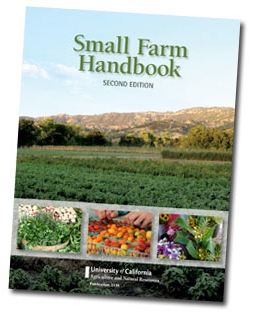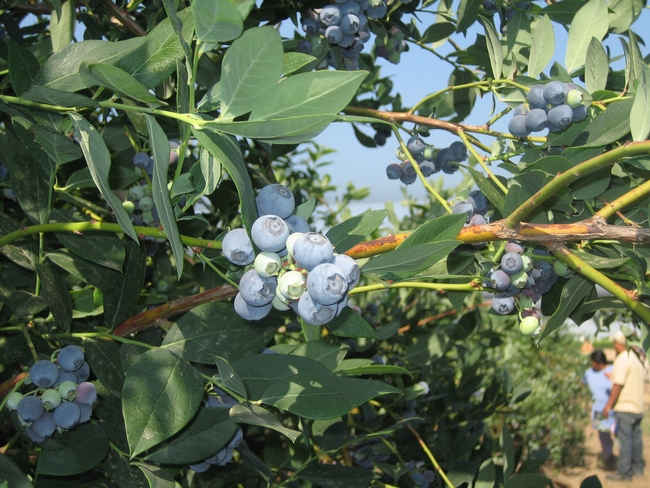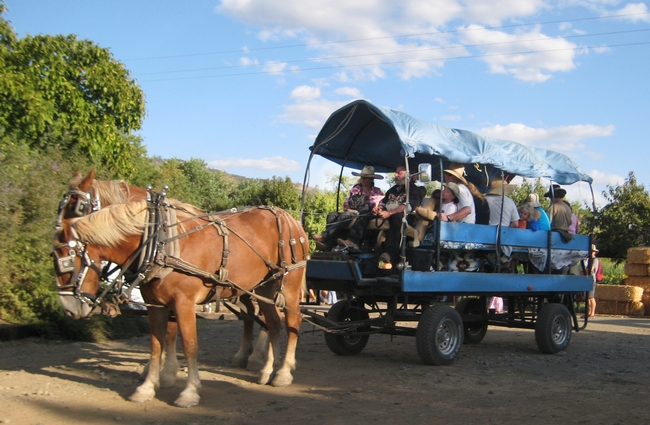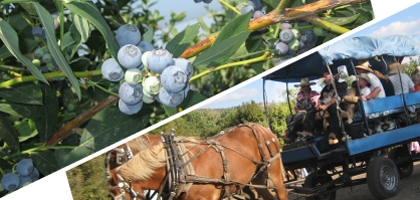- Author: Brenda Dawson
In case you missed it: A brand-new, revised edition of the Small Farm Handbook is now available from the University of California Agriculture and Natural Resources.
The 2011 edition is a collection of expertise from 31 University of California authors, including farm advisors and specialists. This 188-page book has 11 chapters covering both the business side and the farming side of operating a small-scale farm.

"One thing that’s different about this edition is that we really tried to focus on the business aspects of farming," said Laura Tourte, one of the book's two technical editors and director of UC Cooperative Extension Santa Cruz. "In California we know that a wide diversity of crops can be grown, and the business aspects of it — from managing your finances to marketing your products — are absolutely critical if you want to stay viable and sustainable over the long term."
Chapters include:
- Requirements for Successful Farming
- The Basics
- Enterprise Selection
- Farm and Financial Management
- Marketing and Product Sales
- Labor Management
- Growing Crops
- Postharvest Handling and Safety of Perishable Crops
- Raising Animals
- The Vitality and Viability of Small Farms
- California’s Small Farms: An Overview
The book also includes six profiles of farmers from throughout the state, who produce everything from apples to coffee, lamb to ong choi.
Included among the authors are the UC Small Farm Program's Shermain Hardesty, Richard Molinar, Michael Yang, Aziz Baameur, Mark Gaskell, Desmond Jolly (retired) and Brenda Dawson. Many of the 31 authors are also members of the Small Farm Workgroup.
The 2011 edition of the Small Farm Handbook can be ordered from the UC ANR Catalog for $25, plus applicable tax, shipping and handling.
- Author: Brenda Dawson
May 18 may be just another day, but it will be a busy one for the UC Small Farm Program.
That's because on May 18, the Small Farm Program will be in two places at once — hosting two educational meetings in two different locations in the state.
Before I go any further, here are the details in case you are interested in attending either one:

- Blackberry and blueberry field tour
9 a.m. – 3 p.m., Parlier
Visit grower fields and packinghouses, with discussions about field establishment, acidification, irrigation, harvest practices, postharvest handling practices and pruning. (The tour will be followed by a blueberry field day on May 19.) - "Growing Agritourism" workshop
8:30 a.m. – 4:15 p.m., Salinas
Meet with other agritourism operators, tourism experts and government officials to discuss marketing and planning topics. (This is the fifth offering of this workshop, which has already been offered in four other California regions this year.)
(See other small farm-related events on the Small Farm Program calendar.)
At both events, participants will be sharing research, swapping experience and networking, networking, networking.

This is a good reminder that many small-scale farmers have to be skilled at both production (growing food) and marketing (selling food), as they are unlikely to have many employees.
When it comes to production, small-scale farmers can differentiate themselves by growing niche specialty crops — like blueberries. In fact, UC Cooperative Extension farm advisors with the Small Farm Program (most notably Manuel Jimenez and Mark Gaskell) have been instrumental in introducing blueberries to California farmers as a niche crop. (Here's more information about growing blueberries.)
In marketing, small-scale farmers can often get a leg up on the competition by connecting directly with consumers — and agritourism is one way to do so. The Small Farm Program has been a leader in California agritourism for more than a decade, with a statewide directory of farms to visit (CalAgTour.org) and education about agritourism for farmers (currently managed by Penny Leff).
Juggling both production and marketing can be a challenge for any farmer — just like being in two places at once.



